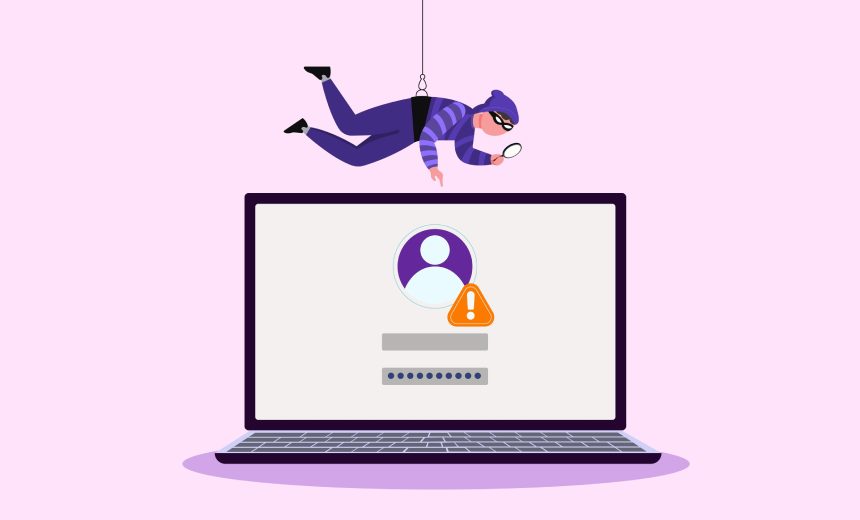‘Observability’ Is Not Observability When It Comes to Business KPIs

We all find ourselves in a continual search for faster and faster identification
and resolution, but what we really want is to switch to a paradigm of being
“proactive.” After all, if we only focus on solving issues faster — falsely
equating proactivity with speed — then we’ll forever be responding to fire
drills based on technical KPIs. Sure, we’ll get faster at them, but we won’t be
making the best decisions for our business. “Proactivity” means running all
engineering efforts based on leading indicators of core business metrics.
Indicators that map to purchase flows, startup times, user abandonment — the
KPIs that are specific to our apps that reflect what our business cares about,
like churn, revenue and LTVs. These leading indicators should be specific to our
business and should ultimately connect with the end user of our apps. And so the
true goal for whatever structure of data that we end up with is that it must
reflect the end-user experience — not myopic, disconnected backend metrics and
KPIs. Anything less and we cannot connect technical failures to business
failures — and definitely not without massive amounts of toil and guesswork.
How security leaders can ease healthcare workers’ EHR-related burnout
EHR systems have been designed to facilitate the billing and documentation
aspects of patient care, with health management and patient needs often being an
afterthought. For example, charting solutions have recently been adding the
ability for patients to exchange messages with their providers via patient
portals. This addresses patients’ needs to communicate with their provider, but
– without careful design –puts an additional burden on clinicians who now need
to spend unbillable time to respond to messages that are interrupting their day.
... Things would be so easy if we didn’t have to put up with those security
controls! Thus, a call to action: Take a closer look at where in the
ecosystem your policies and/or tooling might contribute to issues that play into
a less-than-optimal user experience for your healthcare system’s workforce. By
(re-)evaluating how control requirements can be met without standing in the way
of modernizing record management systems, CISOs may be able to identify
opportunities that will help their CTOs with the task at hand while maintaining
an appropriate risk posture
Risky business: 6 steps to assessing cyber risk for the enterprise

A BIA is used to determine the potential business impact should any information
asset or system have its confidentiality, availability, or integrity
compromised. The first step in a BIA is to identify all relevant information
assets, such as customer and financial data, and information used for the
operation of services and systems, across all environments and across the entire
information lifecycle. Once assets are identified, a value can be assigned to
them. Then the extent of any potential security incident can be determined by
comparing realistic scenarios comprising the most reasonable impact with
worst-case scenarios for each asset. ... Threat profiling starts with the
identification of potentially relevant threats through discussion with key
stakeholders and analyzing available sources of threat intelligence. Once the
threat landscape is built, each threat it contains should be profiled. Threats
can be profiled based on two key risk factors: likelihood of initiation — the
likelihood that a particular threat will initiate one or more threat events —
and threat strength, or how effectively a particular threat can initiate or
execute threat events. Threats can also be further profiled by separating
them into an overarching group: adversarial, accidental, or environmental.
How Artificial Intelligence Will First Find Its Way Into Mental Health
Although there are many challenges when relying on an artificial bot to
interact with patients, there are still areas where artificial intelligence
can augment decision-making. Health insurance companies already see the value
in AI in reducing costs by identifying patients who are high utilizers of
health care services. Prescribing providers routinely receive notifications
from health insurance companies regarding irregular refills of prescriptions
to encourage discontinuation of prescriptions that are not optimally used.
Indeed, large insurance companies possess sizable datasets that are currently
being analyzed to predict the onset of Alzheimer’s, diabetes, heart failure,
and chronic obstructive pulmonary disease (COPD). In fact, AI has already
become FDA-approved for specific uses, and currently, AI shines when it is
applied to a very specific clinical issue. AI systems are initially being
sought to enhance clinical judgment rather than replace clinical judgment.
Ideally, AI will enhance clinician productivity by handling mundane tasks and
alerting to that which may be equivocal and require further investigation by a
human.
Women in IT: 'Significant Strides' Have Been Made, Yet Challenges Persist

The biggest challenge continues to be the underrepresentation of women in the
tech industry, according to Meredith Graham, chief people officer at Ensono.
"While we have seen improvement in recent years, there is still a large gap,
particularly at the senior levels," she said. "To address discrimination and
microaggressions, there can't be only one or two women in the room." Graham
admits this isn't going to change overnight, and to create a safe work
environment for women, there needs to be a collective effort within leadership
to continue to create inclusive workplaces and to not tolerate discrimination
at any level. "There are several strategies, but the two I have seen success
with are women's mentorship programs and ensuring that women are considered
for leadership positions," she said. Mentorship programs can encourage and
foster growth as well as help women overcome any self-doubt when they have
experienced senior mentors guiding them. "We've all had challenges throughout
our careers, and learning that those challenges can be overcome is important
for continued growth," Graham said.
5 Leadership Misconceptions That Hinder Success
There is a misconception that a leader's role is to dictate orders,
perpetuating a command-and-control mentality. Leadership requires action, and
leaders are the ultimate decision-makers in a company. However,
command-and-control leadership stifles creativity and discourages open
communication. Great leaders establish an inclusive working environment where
collaboration flourishes, innovative ideas are shared freely, and team members
are empowered to contribute their expertise — even if it means challenging
preconceived notions. A leader's role is not just to give orders but to
inspire, guide and facilitate the success of the team. ... Some leaders think
they need to insulate their employees from bad news so the team doesn't get
deflated by business challenges. But when leaders shut off communication, the
team ends up making up their own stories to fill in the gaps, and the leader
ends up isolated. As Jim Collins says, "Face the brutal facts." Great leaders
respect their team, win their hearts and minds when they are transparent and
see them as partners in overcoming challenges. Transparent communication also
creates shared accountability.
Think you can ignore quantum computing? Think again.

Even before the algorithms are officially approved this summer, CIOs
should start taking steps. Moody recommends they start by doing a
cryptographic inventory to see which public key crypto systems they and
their partners use. This isn’t easy, but several vendors are developing
tools to help with that process. CIOs can also ensure they assign somebody
to lead in the transition, and that they have the funding and expert staff
they need. Organizations can also start testing the algorithms in their
environments and check their supply chain partners are doing the same.
Jeff Wong, global chief innovation officer at EY, says even if they’re not
yet required to make a change, CIOs can already start planning
NIST-approved algorithms into their cybersecurity upgrades. ... Another
thing CIOs should do is protect against “store-now, decrypt-later”
attacks. Hackers may be collecting encrypted data already that they can
decrypt once quantum computers become big enough and reliable enough to
run Shor’s algorithms. Some industries are more affected than others, such
as healthcare, financial services, and higher education, where medical
records, financial information, and academic records need to be protected
for a lifetime.
Striking a balance for sustainable growth in the AI-driven data center
When density rises, however, the extra heat generated creates a challenge
because it means additional cooling is required. Meeting that need can
take the form of innovative liquid and immersive technologies. At Data4,
we are harnessing liquid cooling at our Marcoussis site in the Paris
region with European cloud provider OVHcloud and have plans to expand this
method to all our campuses. As we expand, this type of optimization is
paramount when analyzing new sites and entering new markets. This is the
case with the development of our new data center in the city of Hanau near
Frankfurt, our first in Germany. With plans to invest €1 billion-plus to
develop the 180MW facility on the 25-hectare site in stages until 2032, it
will be one of the largest and most powerful data center campuses in
Europe. Data centers of such scale are comparatively more efficient than
smaller ones, having sufficient space to allow for scaling up to meet
accelerated demand and therefore helping future-proof investments to a
degree.
The Value of an IT Architect – Why Focusing on Outcomes

First and foremost an IT architect’s main role is to drive change that
creates business opportunity through technology innovation. IT architects
shape and translate business and IT strategy needs into realizable,
sustainable technology solutions, whilst taking end-to-end solution
delivery ownership from idea to benefits delivery. Without an IT architect
most solutions will end in being more expensive to operate, delivery will
be late and customer satisfaction will be poorer. So, the main value of an
IT architect is to reduce cost, risk and increase quality. There are
several papers that details the value of IT enterprise architecture. One
example is a article issued in the Journal of Systemics Cybernetics and
Informatics in March 2018 by Kurek et al. The research paper provided
empirical indications for the effects of enterprise architecture on 3076
IT projects in 28 organizations. It summarised that it had seen an
increase of 14,5% of successful projects, and a decrease of 26,2% of
failed projects when the organization has an enterprise architecture.
Other studies focusing in on enterprise architecture are finding similar
results (see [2-6]), albeit some seem to be contradictory.
Alert: Hackers Hit High-Risk Individuals' Personal Accounts

"This is not a mass campaign against the public but a persistent effort to
target people whom attackers consider to hold information of interest,"
says its guidance for high-risk individuals. The NCSC defines high-risk
individuals in a cybersecurity context as anyone whose "work or public
status means you have access to, or influence over, sensitive information
that could be of interest to nation-state actors." This includes anyone
who works in the political sphere, including elected legislators,
candidates, staff, and activists as well as academics, lawyers,
journalists and human rights groups. Hackers typically pick the fastest,
easiest and least technical strategy required to achieve their goal, and
that increasingly includes targeting not just high-profile individuals but
also their families, said Chris Pierson, the CEO and founder of
cybersecurity firm BlackCloak. "We saw this really increase in 2022 with
attacks on personal cell numbers and emails in the Twilio, Uber and
Zendesk attacks," he said. "We saw, publicly, executives being targeted in
association with attacks on large companies like MGM and Dragos."
Quote for the day:
"Nothing in the world is more
common than unsuccessful people with talent." -- Anonymous
No comments:
Post a Comment